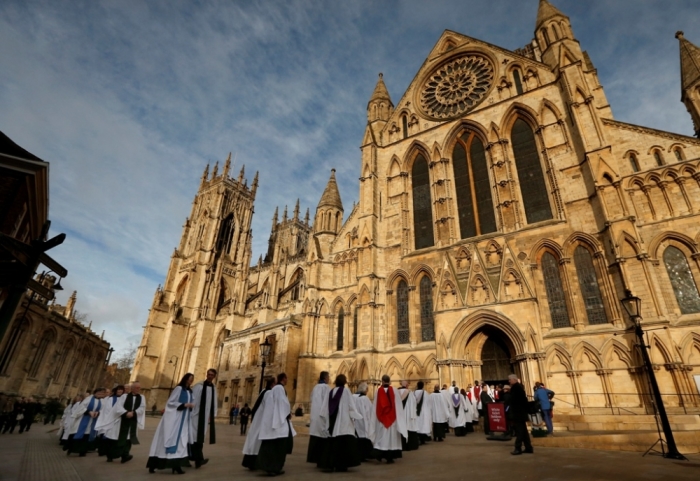Hidden Notes Discovered in England's Oldest Printed Bible Reveal Secrets of the Reformation

A historian has discovered secret annotations using modern technology in the pages of a nearly 500-year-old Bible, one of the only surviving copies of England's oldest printed Bible.
Eyal Poleg, a historian from Queen Mary University of London, explained in a statement to the press that the ancient Bible was published in 1535 by Henry VIII, and has been kept at the Lambeth Palace Library in London.
"We know virtually nothing about this unique Bible — whose preface was written by Henry himself — outside of the surviving copies," Poleg said.
"At first, the Lambeth copy first appeared completely 'clean.' But upon closer inspection I noticed that heavy paper had been pasted over blank parts of the book. The challenge was how to uncover the annotations without damaging the book."
The historian collaborated with Dr. Graham Davis, a specialist in 3D X-ray imaging at QMUL's School of Dentistry, and used a light sheet which they slid beneath the pages to take images in long exposure, one with the light sheet on and one with it off.
Estimated to have been written between 1539 and 1549, the annotations were apparently copied from the 'Great Bible' of Thomas Cromwell during the English Reformation, but were covered with think paper in 1600, remaining concealed until their discovery by Poleg.
The historian offered that the annotations might support the theory that the Reformation, the time period when the Church of England broke away from the Roman Catholic Church, causing one if the biggest splits in the history of Christianity, was a gradual process.
"Until recently, it was widely assumed that the Reformation caused a complete break, a Rubicon moment when people stopped being Catholics and accepted Protestantism, rejected saints, and replaced Latin with English," Poleg said.
"This Bible is a unique witness to a time when the conservative Latin and the reformist English were used together, showing that the Reformation was a slow, complex, and gradual process."
He further reflected that the Bible is a "unique witness to the course of Henry's Reformation," as it was printed in 1535 by the king's printer and with Henry's preface, but only a few years later great changes took place, as the Latin Bible was altered to accommodate reformist English.
The Lambeth Library Bible is far from the world's oldest printed version of the Gospel, however, as the Gutenberg Bible, the first major printed book in Europe using movable metal types, predates it by almost 80 years.
Printed in Mainz in 1455 or 1456, the Gutenberg Bible is regarded as extremely valuable due to its historical significance and the fact that there are only 48 surviving copies of it, some of which are held at Harvard and Yale universities, the New York Public Library, the Library of Congress and the Morgan Library & Museum in New York.





























